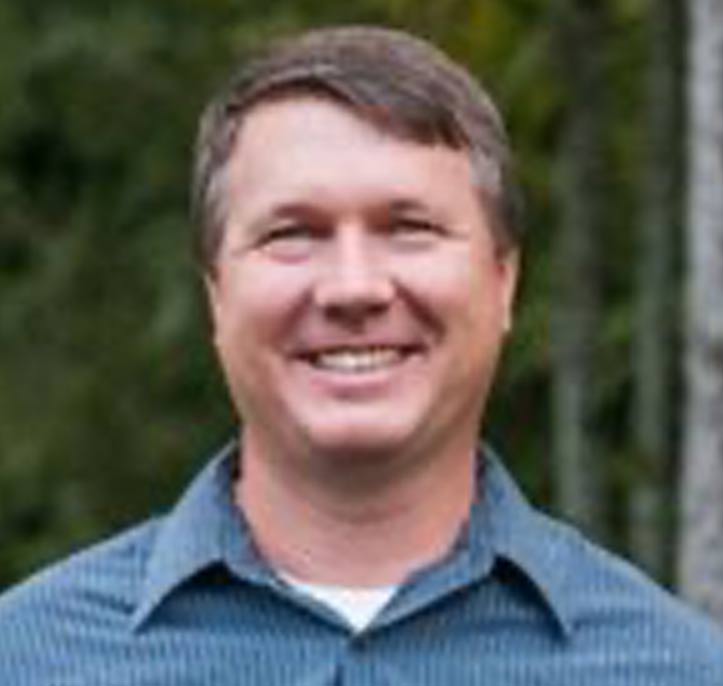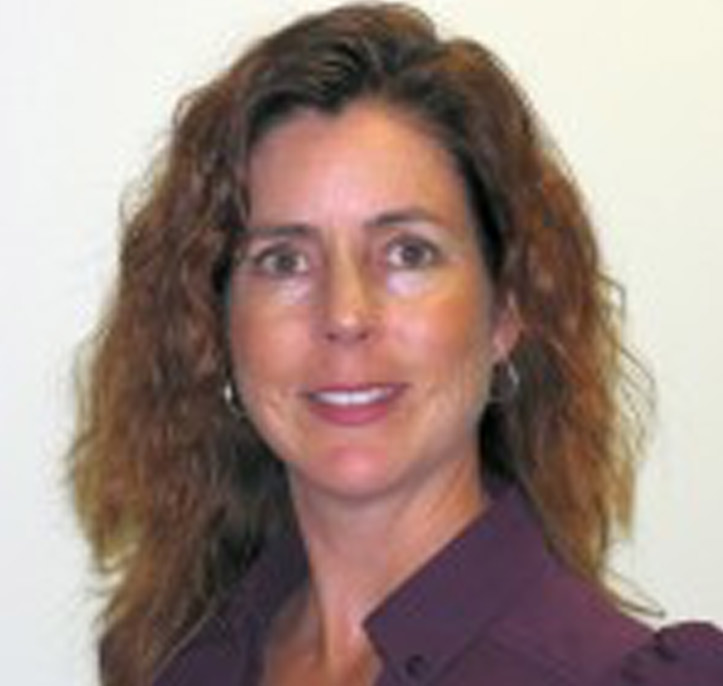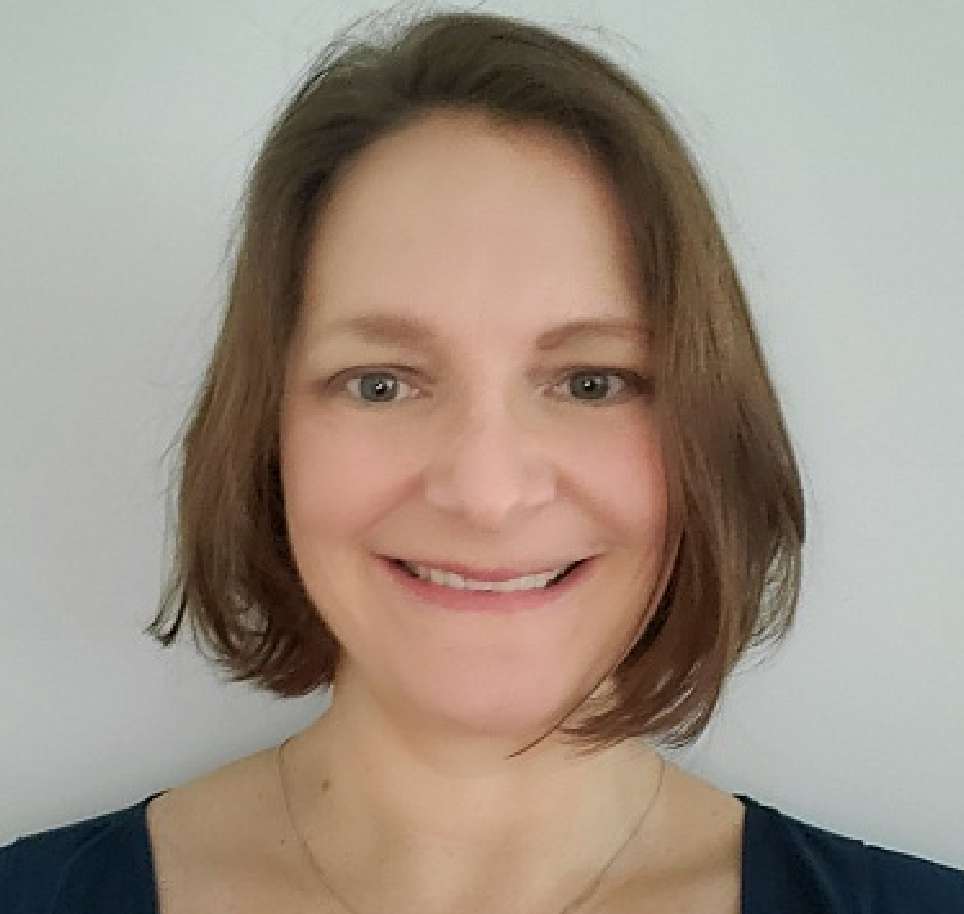2015 SMART Toronto
January 29, 2015
SMART Remediation talks have focused on innovative technologies for remediating contaminated sites, approaches for site characterization, project case studies, regulatory and industry perspectives, and other related topics.

The 14th SMART Remediation conference was held in Toronto on Thursday, January 29th, 2015. Details on the speakers and presentations are provided below.
Speakers

Joe Ricker,
EarthCon Consultants, Inc.
Joe Ricker
For more than 24 years, Mr. Ricker has helped clients optimize a wide range of remediation solutions associated with past and present environmental liabilities under various regulatory programs in more than 30 states, as well as multiple remediation sites in Canada and Brazil. He brings a unique perspective to complex interdisciplinary projects and has managed remedial investigation and design projects involving a wide range of chemicals including petroleum hydrocarbons, pesticides, herbicides, wood-treating chemicals, solvents, and PCBs in soils, sediment, groundwater and air. Mr. Ricker is a licensed Professional Engineer in 24 states. He received a B.S. in Civil Engineering from Rose-Hulman Institute of Technology and a M.S. in Civil Engineering from the University of Memphis.
Advances in Groundwater Plume Stability and Plume Diagnostic Evaluations
Evaluation of the relative stability of a groundwater contaminant plume is generating increasing attention as many domestic and international stakeholders are realizing the applicability of plume stability as part of the environmental evaluation and/or remedial planning process of a site. Specifically, a plume stability evaluation allows the stakeholder to assess whether a contaminant plume is stable, decreasing, or increasing for a variety of metrics (i.e., area, concentration, mass, center of mass, and spread of mass). This allows better evaluation of whether additional remedial action is necessary, if risk-based closure of a site is applicable, or whether natural attenuation processes may be occurring at a site. The Ricker Method® for plume stability analysis is a unique method of evaluating plume stability that overcomes limitations posed by conventional well-by-well analysis techniques. Additionally, outputs from the Ricker Method® can be used as a basis for other plume diagnostic tools that allow the user to further evaluate and communicate groundwater plume dynamics. This method has been used as a basis for the cessation of remediation systems, identification of commingled plumes, identification of potential unrealized source areas, and providing additional lines of evidence for natural attenuation; examples of which will be presented.

Dr. Theresa Phillips,
exp Services
Vapour Intrusion RA Methodology: A Comparison of Empirical vs Modeled (J&E) Soil Vapour and Indoor Air Concentrations
- Bio |
- Abstract
- | Presentation
Dr. Theresa Phillips
Dr. Phillips has over fifteen years of experience in environmental biology and remediation work including risk assessments and toxicological evaluations of contaminated sites. As Senior Toxicologist and Risk Assessment Specialist at exp, she oversees the preparation of risk assessments for the Ontario Ministry of Environment and Climate Change (MOECC) under Ontario Regulation 153/04. In addition, her team works on various unique environmental projects involving forensics or legal investigations, and performs risk assessments for other jurisdictions within Canada and the USA. Prior to joining exp, Dr. Phillips was the Laboratory and Project Manager for Adventus Remediation Technologies, Mississauga, ON (now Peroxychem), where she managed the execution of bench-scale treatability studies, oversaw laboratory analyses, and participated in a number of a full-scale soil remediation projects. To date, she has been involved in over 100 environmental projects including ESA, soil and water remediation, toxicity testing and degradation and fate studies of chemical contaminants, for various clients across North America and in Europe. Her additional work as a research scientist with KAM Biotechnology, Surrey, BC and at the University of Guelph, ON, has included an in-depth evaluation of soil toxicity tests for monitoring and assessing bioremediation of hydrocarbon-impacted soils, and the use of mutational and other bioassays to determine the fate and toxicity of parent and metabolic products of pesticides, nitroaromatics and other chemical contaminants. She has presented at numerous conferences for environmental professionals, is a peer reviewer for a number of journals specializing in environmental biology and toxicology, and has taught at the University of Guelph.
Vapour Intrusion RA Methodology: A Comparison of Empirical vs Modeled (J&E) Soil Vapour and Indoor Air Concentrations
The Johnson and Ettinger (J&E) model for vapour intrusion is heavily depended on by consultants in Ontario for the generation of risk-based Property-Specific Standards (PSS) intended for the filing of Records of Site Condition (RSCs) under Ontario Regulation 153/04. The model was also used by Ontario regulators to derive the current soil and ground water Standards for volatile organic compounds (VOCs) and is an integral part of the Tier 2 Modified Generic Risk Assessment (MGRA) model. However, the model is widely viewed as being highly conservative with respect to predictions of vapour intrusion risks. Therefore, we endeavored to validate the model and input parameters that are considered suitable for risk assessment by the MOE, using empirical data collected from several risk assessment sites in Ontario. We compared the predicted source vapour and indoor air concentrations of several VOCs, as modeled for a number of risk assessments, to actual measured soil vapour and/ or indoor air concentrations. Our results suggest that the model over-predicts indoor air concentrations by at least an order of magnitude, when used with soil data. Data for three chlorinated VOCs (tetrachloroethylene, trichloroethylene and vinyl chloride), measured at three sites, were evaluated. Modeled indoor air concentrations based on maximum ground water concentrations of the same VOCs, at the same sites, were less conservative but generally still overestimated the indoor air exposure concentrations. Over-predictions of vapour infiltration obtained using soil data are probably due to the MOE-mandated assumption that a single point source exceedance extends beneath the entire footprint of the building in question. Thus, estimates of the spacial extent of impacted areas and revised modeling results, for soil impacts, were also prepared for evaluation. In most cases, the presence of ground water contaminants was accompanied by concurrent soil impacts, which likely accounts for under-predictions of indoor air concentrations using ground water data alone. The results of our assessment also suggest that source vapour concentrations predicted by the J&E model are generally higher than actual soil gas measurements. Modeled source vapour concentrations of chlorinated VOCs (1,1-dichloroethylene, trichloroethylene, tetrachloroethylene) on one site, or petroleum hydrocarbons (benzene, toluene, xylenes) measured on a second site, in soil and/ or ground water, were consistently higher than measured soil vapour concentrations of the same parameters. It is our hope that comparisons such as these, of predicted values versus empirical data, will aid in future development of more appropriate models for vapour intrusion, to be used in the risk assessment of brownfield sites.

Jean Paré,
Chemco inc.
Slow-Release Persulfate and MultiOx™ Cylinders for Passive, Long-Term, In-Situ Treatment of PHC Sites
- Bio |
- Abstract
- | Presentation
Jean Paré
Jean Pare, P.Eng., has a degree in Chemical Engineering from Laval University. He has been involved for the last 22 years in the evaluation, development, design, and promotion of both conventional and innovative environmental technologies. As Vice President with Chemco Inc., his responsibilities include the remediation design, technico-economical analysis and technology supply for chemical oxidation and reduction, soil washing, and enhanced bio-remediation. Last year, he worked with over 400 sites applying his expertise to various types of organic and inorganic contaminants in soil and groundwater. He is also involved with many environmental organizations such as CLRA, CBN, ESAA, BCEIA and Reseau-Environnement where he is an active technical committee member and regular technical speaker.
Slow-Release Persulfate and MultiOx™ Cylinders for Passive, Long-Term, In-Situ Treatment of PHC Sites
Groundwater impacted with petroleum hydrocarbon contamination (e.g. benzene, toluene, ethylbenzene, xylene (BTEX), methyl-tert butyl alcohol (MTBE), and polycyclic aromatic hydrocarbons (PAH’s)) is common. In situ chemical oxidation using persulfate and permanganate, or combinations of persulfate and permanganate has been successfully as a treatment technology for the remediation of petroleum hydrocarbons and BTEX compounds. The application of Persulfate SR (Slow Release) ISCO reagent and MultiOx™ SR ISCO reagent cylinders are novel remedial approaches for the implementation that are sustainable low footprint, does not require the injection of liquids, and minimizes disruption of active facilities. This presentation will show case a series of bench-scale oxidation experiments were performed to (i) understand oxidant release rates from slow-release persulfate or MultiOx cylinders versus direct chemical injection, (ii) determine the persistence of oxidants in site soil, and (iii) determine the kinetic rate of contaminant degradation. Oxidant release rates from slow release oxidant cylinders were evaluated in a series of long-term 1-D column experiments. Soil oxidant demand was experimentally determined from a range of oxidant concentrations. Additionally, batch contaminant oxidation experiments were conducted in deionized water and soil materials to evaluate the potential of natural activation mechanisms. Kinetic models were used to describe the contaminant oxidation rates and regression models were developed to quantify the release of oxidants from the cylinders. Finally, 1-D column experiments were conducted to demonstrate BTEX/MTBE oxidation efficiency from slow-release persulfate and MultiOx cylinders. Based on the lab work above, a conceptual framework was developed that incorporated (i) oxidant release from the cylinders, (ii) soil oxidant demand rates, and (iii) contaminant oxidation kinetics. Results from these experiments demonstrate that the oxidant released from the cylinders is sufficient to overcome the soil oxidant demand, and can effectively degrade petroleum hydrocarbon contaminants in situ. The utilization of slow release persulfate or MultiOx cylinders can provide a simple, long-term and cost-effective approach for remediating petroleum hydrocarbon contamination in the subsurface. The cylinders can be easily emplaced in the subsurface using direct-push technology or suspended in wells for easy recharge. There is great potential to combine the slow release oxidant cylinders with other technologies such as biological remediation or other mass removal strategies (e.g. excavation, SVE) for accelerated and more efficient site remediation.

Evan Cox,
Geosyntec Consultants
Case Study: Full-Scale Electrokinetic-Enhanced Bioremediation (EK-BIO) of a PCE DNAPL Source Area in Clay Till
- Bio |
- Abstract
- | Presentation
Evan Cox
Mr. Evan Cox is a principal remediation scientist with 25 years of demonstrated experience in the development, feasibility evaluation and application of innovative remediation technologies, including enhanced in situ bioremediation (EISB), in situ chemical oxidation (ISCO), in situ chemical reduction (ISCR), monitored natural attenuation (MNA), and thermal and electrokinetic treatment of chlorinated solvents, energetics and explosives, PCBs, and redox-sensitive metals in porous media and fractured bedrock. He works with private sector interests and government research programs to develop innovative in situ treatment technologies, and to demonstrate and validate their use at field scale for widespread commercial use. As part of his in situ remediation research, development, and implementation work, he has authored over 50 professional publications and articles regarding the degradation of hazardous contaminants in subsurface environments, and has co-authored multiple guidance documents and educational courses on these subjects.
Case Study: Full-Scale Electrokinetic-Enhanced Bioremediation (EK-BIO) of a PCE DNAPL Source Area in Clay Till
The success of in-situ remediation technologies requires effective and uniform delivery of remediation reagents through the target treatment area. Traditional amendment delivery techniques based on hydraulic advection mechanisms are often faced with limitations in areas with low-permeability materials and/or highly heterogeneous geology. Transport of ionic substances, such as lactate, in an electric field is relatively independent of hydraulic properties and fluid flow. Therefore, electrokinetic-enhanced amendment delivery represents an innovative solution allowing effective in-situ remediation in areas where permeability is limited and heterogeneous. In 2011 a field pilot test was carried out at the Skuldelev site, Denmark to assess the ability of the novel EK-BIO technology to treat PCE DNAPL source material in clay till with interbedded deposits of sand. The EK-BIO pilot test demonstrated the transport and distribution of amendments (lactate and microbial culture KB-1™) through clay soils in the target area. Results from groundwater and clay soil sampling showed significant reductive dechlorination of PCE to cisDCE, VC and ethene coupled with significant levels of dechlorinating microorganisms (Dhc with vcrA), indicating that PCE dechlorination in clay soil was achieved by EK-BIO with KB-1™ bioaugmentation. Based on the successful pilot test, full-scale remediation was implemented. Full-scale EK-BIO of a PCE source area at was initiated in December 2012. The treatment zone, addressed by a network of 15 electrode wells, covers an area of 100 m2 to a maximum depth of 10 m bgl. The overall area is divided into two sub-areas, which are treated in alternating stages, each for a period of three months. The polarity of the electrodes is changed to alter the current directions and electric field orientations in alternating stages in order to optimize the EK transport efficiency and to achieve treatment of the entire target zone for remediation. Performance monitoring comprises monthly water sampling for TOC and field measurements, as well as quarterly water sampling for complete characterization of contaminant composition and degradation processes. In addition, soil sampling was also performed at the end of select stages of operation to assess treatment in clay materials. The results from the first two years of EK-BIO operation will be presented. At present, 5 stages (approximately 20 months) of operation and monitoring have been completed with very encouraging results. Electron donor and Dhc have been distributed throughout the treatment area, and complete reductive dechlorination of PCE to ethene has been well established, with the degree of dechlorination continuing to increase. Orders of magnitude increases of Dhc have been observed between clay soil samples collected before remediation and following one year of EK-BIO. Soil sampling data support the groundwater monitoring data and confirm that EK-BIO implementation has achieved active reductive dechlorination treatment within low-permeability clay materials. Successful implementation of this EK technology will broaden the applicability of various in-situ remediation technologies including in situ bioremediation and in situ chemical oxidation.

Maureen Dooley,
REGENESIS
Sorption Coupled with Enhanced Biodegradation to Treat PHC and VOC Groundwater Contamination
- Bio |
- Abstract
- | Presentation
Maureen Dooley
Ms. Dooley has over twenty eight years’ experience in many aspects of environmental industry including project management, research and development, senior technical oversight, remedial design and laboratory management. Ms. Dooley’s current position is the Northeast Region Manager for Regenesis. She is responsible for managing both sales and technical support associated with Regenesis bioremediation and chemical oxidation products. As part of her responsibilities at Regenesis she has reviewed hundreds of potential projects and provided recommendations for remediation. Ms. Dooley is also responsible for managing key projects for Regenesis. Much of her work over her career has been focused on the development and implementation of bioremediation programs. Over the past several years, however, she has been focused on chemical oxidation applications at petroleum and chlorinated hydrocarbon sites. Ms. Dooley has drafted hundreds of project proposals, evaluations and reports related to the feasibility of using bioremediation. In addition, prior experience includes the completion of numerous treatability studies designed to evaluate the biodegradation of a wide range of chemical constituents that include chlorinated solvents, petroleum hydrocarbons, explosives, aromatic hydrocarbons and pesticides
Sorption Coupled with Enhanced Biodegradation to Treat PHC and VOC Groundwater Contamination
Enhanced biodegradation and monitored natural attenuation (MNA) are effective, widely-used tools for elimination of organic contaminants in groundwater. However, the timeframe for treatment by these methods can be on the order of months to years. To significantly improve remediation performance beyond that of traditional enhanced bioremediation, a new in situ colloidal biomatrix has been developed that accelerates biodegradation and drastically shortens the timeframes for reaching groundwater treatment goals. This presentation demonstrates the efficacy of a colloidal in situ remediation agent that consists of highly sorptive activated carbon particles (1-2 microns in size) stabilized to transport widely through an aquifer upon injection. The stabilized colloids deposit on soil surfaces, forming a biomatrix that traps contaminants and accelerates their degradation. Some advantages of this approach include a rapid drop in groundwater concentrations, along with the ability to stop plume migration and protect sensitive property boundaries or environmental receptors. It is hypothesized that the protective effects of the colloidal agent last many years after its application. Laboratory data provide confirmation of post-sorption degradation enhancement, describing a significant increase in the rate of contaminant destruction in biotic matrix systems compared to abiotic matrix and biotic non-matrix controls. Field studies confirm wide-area dispersion and groundwater monitoring data are presented showing greater than 99% contaminant reductions. Overall, the presentation will focus on demonstrating field performance through evaluation of the distribution of the biomatrix and the corresponding contaminant reductions.

Laura Jones,
Golder Associates
Case Study: Using Laser Induced Fluorescence (LIF) to Establish a Monitoring Well Network for a Mobile LNAPL Plume Near a Surface Water Body
- Bio |
- Abstract
- | Presentation
Laura Jones
Laura Jones is an Environmental Engineer with over seven years of consulting experience related to the completion of environmental site assessments including advanced characterization methods, groundwater monitoring programs, spill response, tank pulls and soil/groundwater remediation. Laura holds a B.A.Sc. in Environmental Engineering and an M.A.Sc. in Civil Engineering, both from the University of Waterloo. Her research at the University of Waterloo was on the characterization of aquifer materials to determine suitability for in situ chemical oxidation with permanganate.
Case Study: Using Laser Induced Fluorescence (LIF) to Establish a Monitoring Well Network for a Mobile LNAPL Plume Near a Surface Water Body
The former Michigan Avenue Landfill (now Canatara Park) was used by the City of Sarnia for disposal of municipal waste between approximately 1930 and 1967. Between approximately 1930 and 1944, oily waste was reportedly disposed of at the Site from one of the local refineries. This waste material was reportedly a by-product of a process that used clay to remove colour impurities during the production of automobile lubricating oil. In 1997, light non-aqueous phase liquid (LNAPL) was discovered to be discharging to the southwest shore of Lake Chipican, north of the former landfill. In response, temporary measures were taken by the City to contain and collect the oil film at the lake. In 2000, remedial measures were developed to mitigate the discharges from former Michigan Avenue Landfill including installation of a 70-metre-long sheet-pile barrier wall along the south shore of Lake Chipican and installation of two oil recovery wells south of the barrier wall. An annual monitoring program commenced in 2000, to detect LNAPL at monitoring locations prior to potential migration to Lake Chipican. During routine monitoring in October 2011, LNAPL was detected in a sentry well located near the west end of the barrier wall which prompted additional remedial measures. Since LNAPL was discovered in a sentry well, a subsurface investigation was undertaken to determine the current extent of LNAPL in the vicinity of Lake Chipican. The subsurface investigation used Laser Induced Fluorescence (LIF) to delineate the extent of the LNAPL plume and to determine locations for additional monitoring wells to provide advance warning of plume migration prior to encountering sensitive receptors. LIF uses a built-in laser to emit short pulses of light of a certain wavelength range. Polycyclic aromatic hydrocarbons (PAHs), present in the automobile lubricating oil, fluoresce when excited by light of a known wavelength and emit light of a specific wavelength range. In April 2012 and April 2013, an LIF investigation was completed at 49 locations and monitoring wells were installed at 9 locations near Lake Chipican and associated surface water bodies to provide advanced warning of LNAPL plume migration. These additional wells were incorporated into the annual groundwater monitoring program and have been included as trigger wells in the Trigger and Contingency Plan for the former Landfill. Since start of the LIF investigation program, additional LNAPL migration has been discovered based on the network of monitoring wells installed and results of the LIF investigations. Additional LIF investigation is planned for Fall 2014, the results of which will be included in the platform presentation.